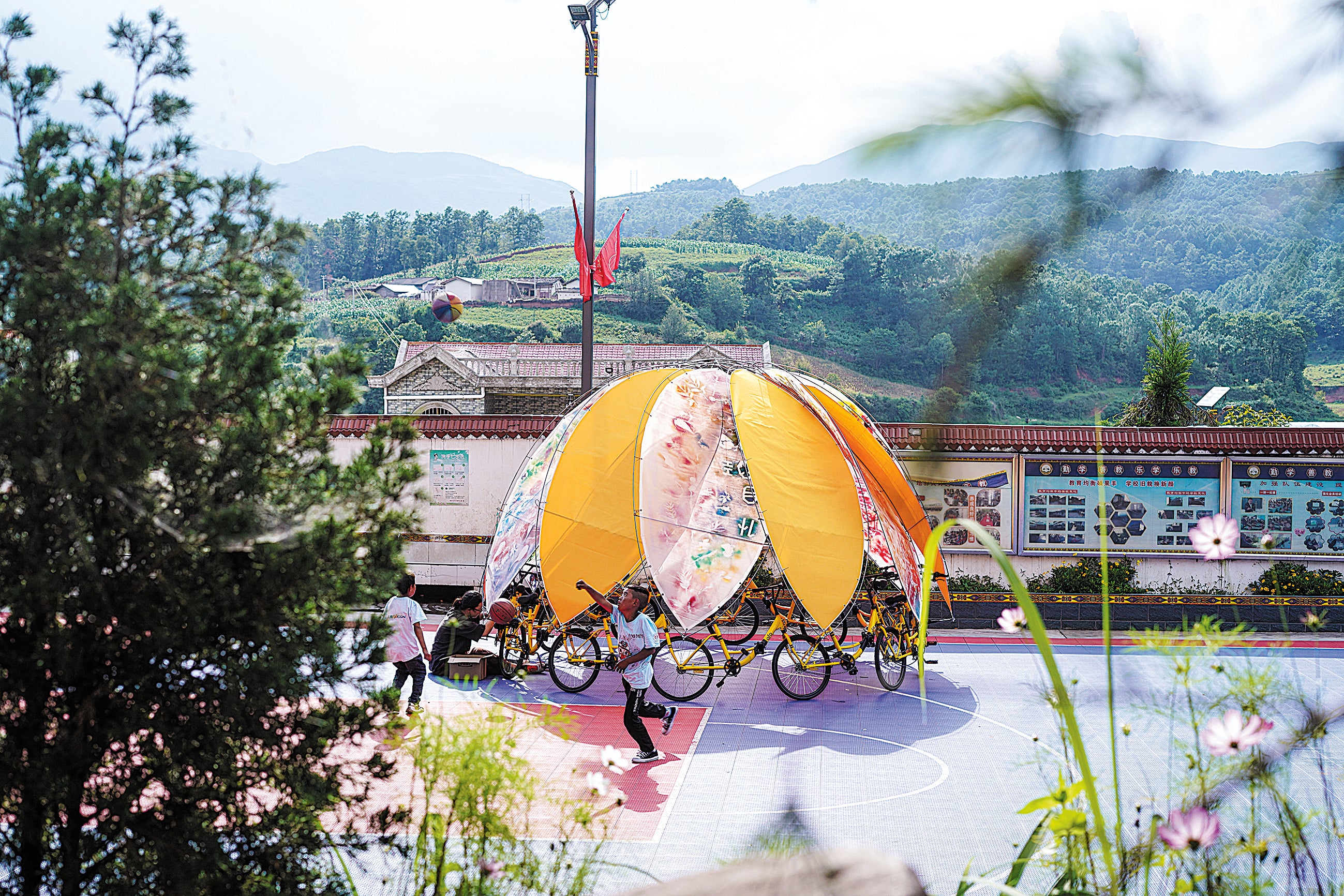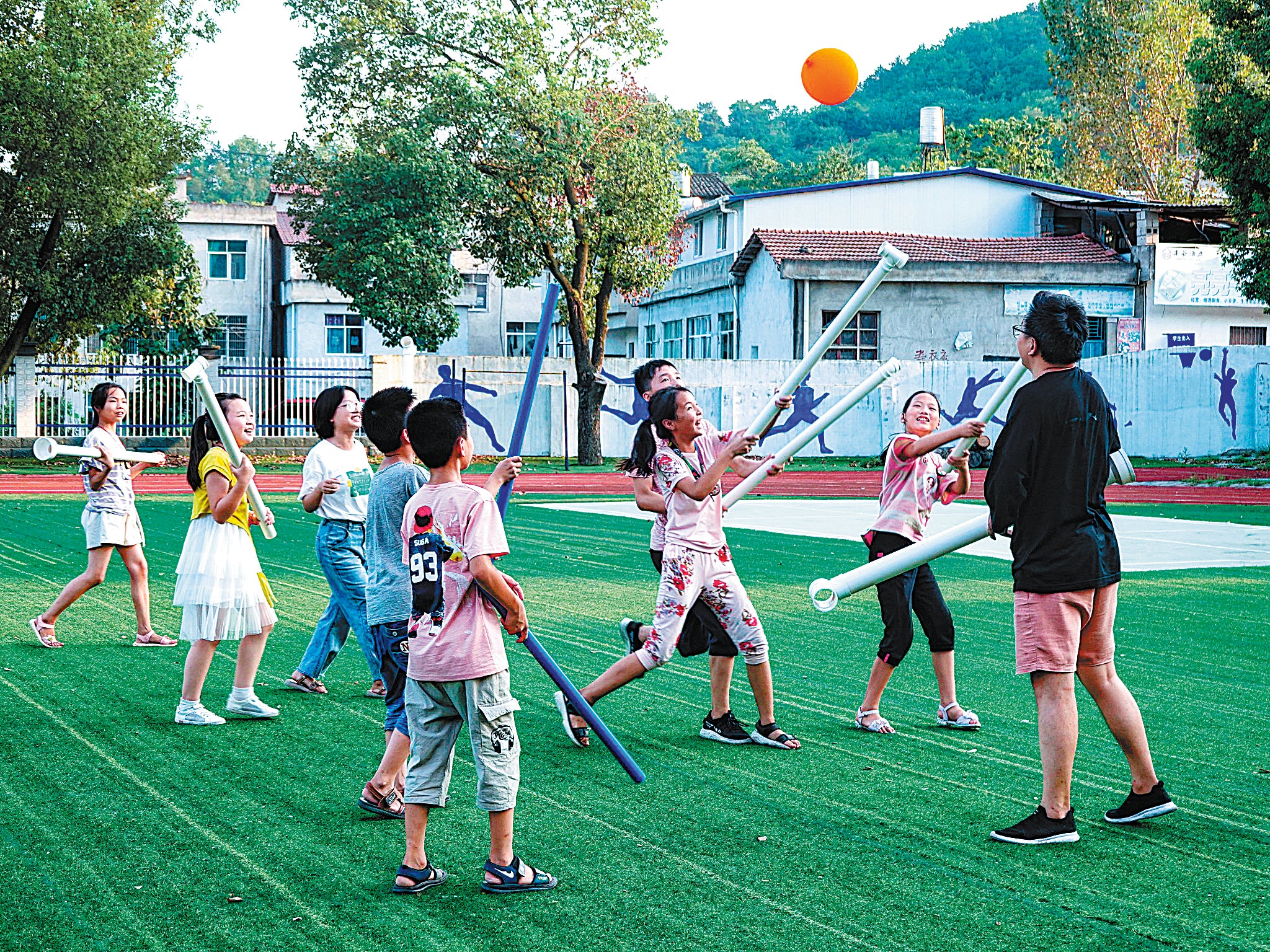Nurturing a younger generation
THE ARTICLES ON THESE PAGES ARE PRODUCED BY CHINA DAILY, WHICH TAKES SOLE RESPONSIBILITY FOR THE CONTENTS

Under the cloudy night sky lit by fireworks, a group of schoolchildren takes a “carousel ride” to celebrate a traditional torch festival in Puge county, Liangshan Yi autonomous prefecture, Sichuan province.
This “carousel” is a new toy they made, with 12 bicycles joined to form a circle. The inside space is dotted with colourful solar lamps. As 12 children ride the bicycles, the bright yellow installation turns round and round, just like a carousel in theme parks.
Nan Xueqian is one of the initiators of Programme Spark, which helps nurture the creativity of children. The bicycle installation, called Blooming Time, is inspired by the strong emotional connection among children.
It was the fourth time that One Take Architects of Beijing and the social enterprise group Sunners of Wuhan have staged the weeklong programme. It aims to motivate left-behind eight-to-12-year-olds, with the help of architects and volunteers, to use easily available material to create large items they can play with.
“When I was at this age I was no longer satisfied with making small handwork pieces but always dreamed of something big enough to put myself in,” Li Hao, founder of One Take Architects, said of his aims with the programme.
He developed an interest in the education of left-behind children when he worked with projects in the countryside in 2015. He discovered that as living conditions improved, another problem cropped up. Apart from their parents’ work – most are manual workers in cities – the children barely knew what other more creative job opportunities could lie in their future.

Li wanted to give rural children an example of what an architect can be good at. This year about 30 pupils joined the making of the carousel-like installation and some learned to ride a bicycle.
Before the architects set off from their city base, they had prepared for a month. They managed to get 12 old bicycles, designed the main structure of the installation and completed it for testing before tearing it down again and deciding what tools the children would use. They compiled a manual with step-by-step instructions on how to assemble it.
It was the children who took the lead in designing the canopies made from canvas and plastic sheets.
They collected local plants, covered them on the sheets and sprayed pigments on them to form patterns.
It was not easy for the children to learn to ride, but the installation could move while being stable enough so they did not fall. It would not revolve smoothly if any of the children slacked off in pedalling.
The architects and volunteers hoped the children could safely maintain their physical balance and co-ordination and learn to work together.
In order not to waste other parts of the bicycles, they also painted the mudguards, showing what their home town looked like.
The programme has been designed to engage as many senses as possible. One of the trials took place in the Dabie Mountain area in Hubei province in 2019, where Tie Yang, a musician, and others built a multifunctional theatre with white and blue plastic drain pipes.
One of the installations, Blue Daydream, was a percussion instrument similar to old Chinese chimes. The pitch was determined by the length and thickness of the pipes. Using disposable slippers as drumsticks and accompanied by an African drum, the children’s band was able to work out the well-known tune of We Will Rock You.
During the break, the children spontaneously turned a balloon into a Quaffle – the ball used in the Quidditch game in the Harry Potter series. They designed and assembled their own clubs, and started a little Quidditch game.
Li and Nan are keen to explore a standard system to insert such lessons into more rural schools.
They hope this can operate without architects needing to be present. Volunteers, usually college students studying or interested in architecture or art, can be trained online and independently guide the children to get going with the least intervention.
Previously published on Chinadaily.com.cn
